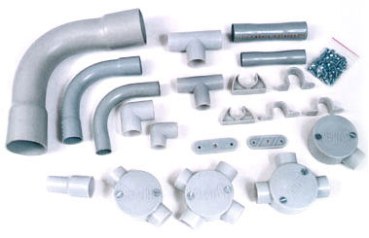Complete Guide To Conduits
As a do-it-yourself (DIY) person can be very advantageous particularly where costs are concerned. By simply attaining certain things by yourself, you actually reduce labor expenses. This certainly leads to lower overall expenses when undertaking any project. One such endeavor you can undertake on your own is to set a conduit body, mainly when designing a new house or setting up an extension.
Functionality
Conduits are basically tubular devices built to be placed on walls. It’s through them that service wires pass to different areas in a building. You’ll most definitely find electricians rely on them when wiring a building.
One of the key features of conduits is that they will let you quickly access wire cables designed to serve different rooms. You just insert the needed cables into the inlet and press the same until the wires reach the outlet point, that can be a junction box or simply a switch. Conduits likewise serve to offer protection to cables within from unwanted damage.
Materials
Something you seriously have to note is the fact that conduits are made of various materials. It is therefore really important that you think about the reason for installing the same so that you will only get the best suited one in relation to material used. You will probably come across conduits made of aluminum, galvanized steel and PVC. All these different electrical materials are perfect for use in different environments.
Types of conduits
Apart from the materials used in making conduits, you are as well obligated to just get a type that best suits your wiring needs. Note that the different types as well serve different functions. The truth however is you will have to purchase different types of conduits so that you will effectively wire your building perfectly.
* L-Shaped – This is the most common types of conduits available. You’ll require an L-shaped conduit if wiring your building involves passing wires at tight angles such as 90-degree angles. The L-shape lets you easily direct wires through to the required location on the wall.
* T-Shaped – This is one of the most crucial type of conduits you will possibly not do without when wiring a building. It’s importance lies in the fact that it allows you to easily route wires in three different directions. It’s easy to use it to route 3 different wires; one down the wall, one to the left and the other toward the right.
* C-Shaped – Even though commonly known to as C-shaped cables, this type is usually straight. It is probably the most common types of conduits you will find. You will obviously need this type because of the need to pull wire cables over a long and straight wall.
Conduits are generally designed with access covers at the inlet that you can easily remove. Depending on the functionality, you may have to change the covers after wiring. It is very important mention that the above are not the only types of conduits you are likely to come across. I have listed the most common that are commonly used in houses. There are also industrial conduits service like conduits that some home owners are now getting plus using at home.

Leave a comment